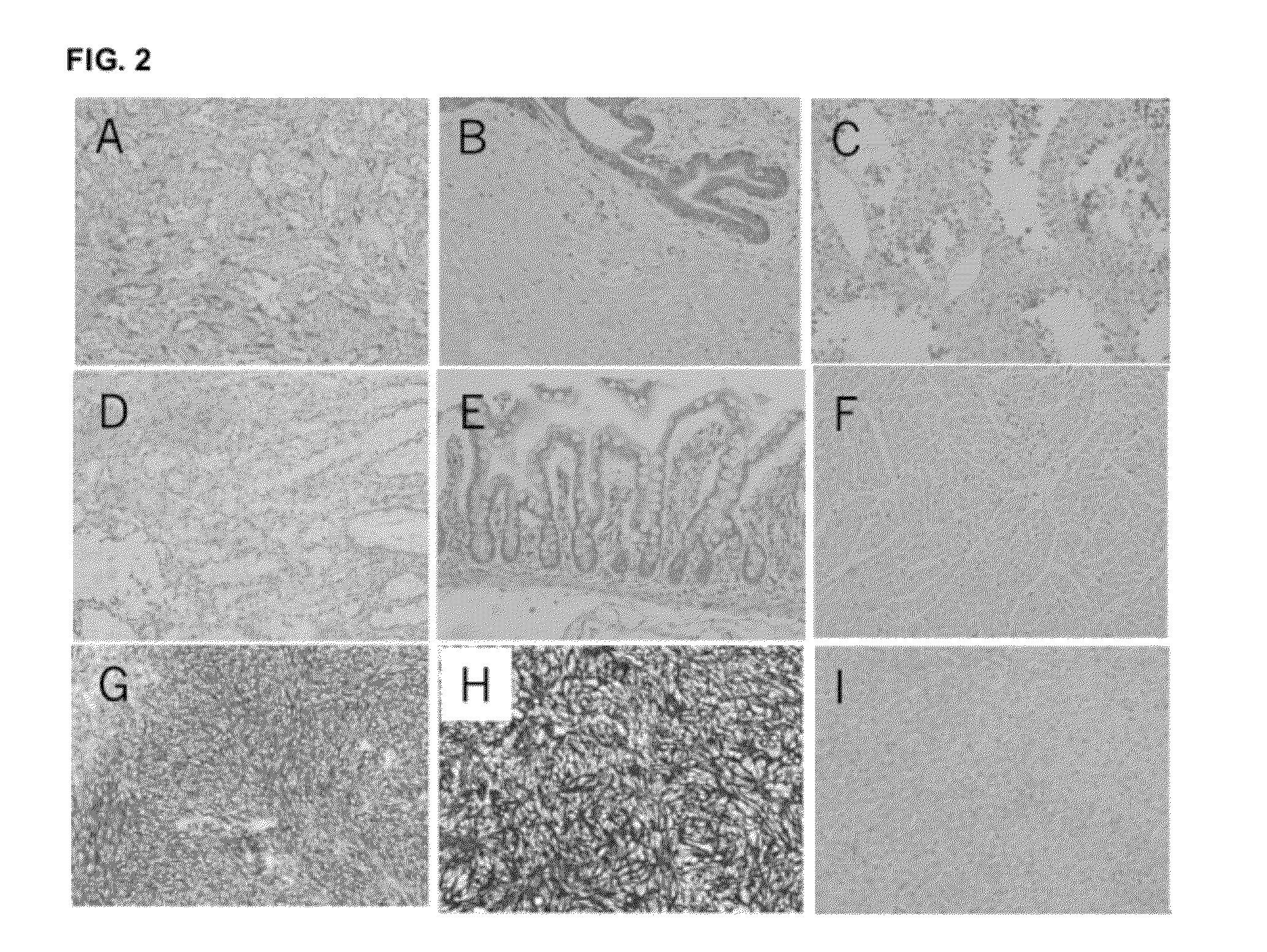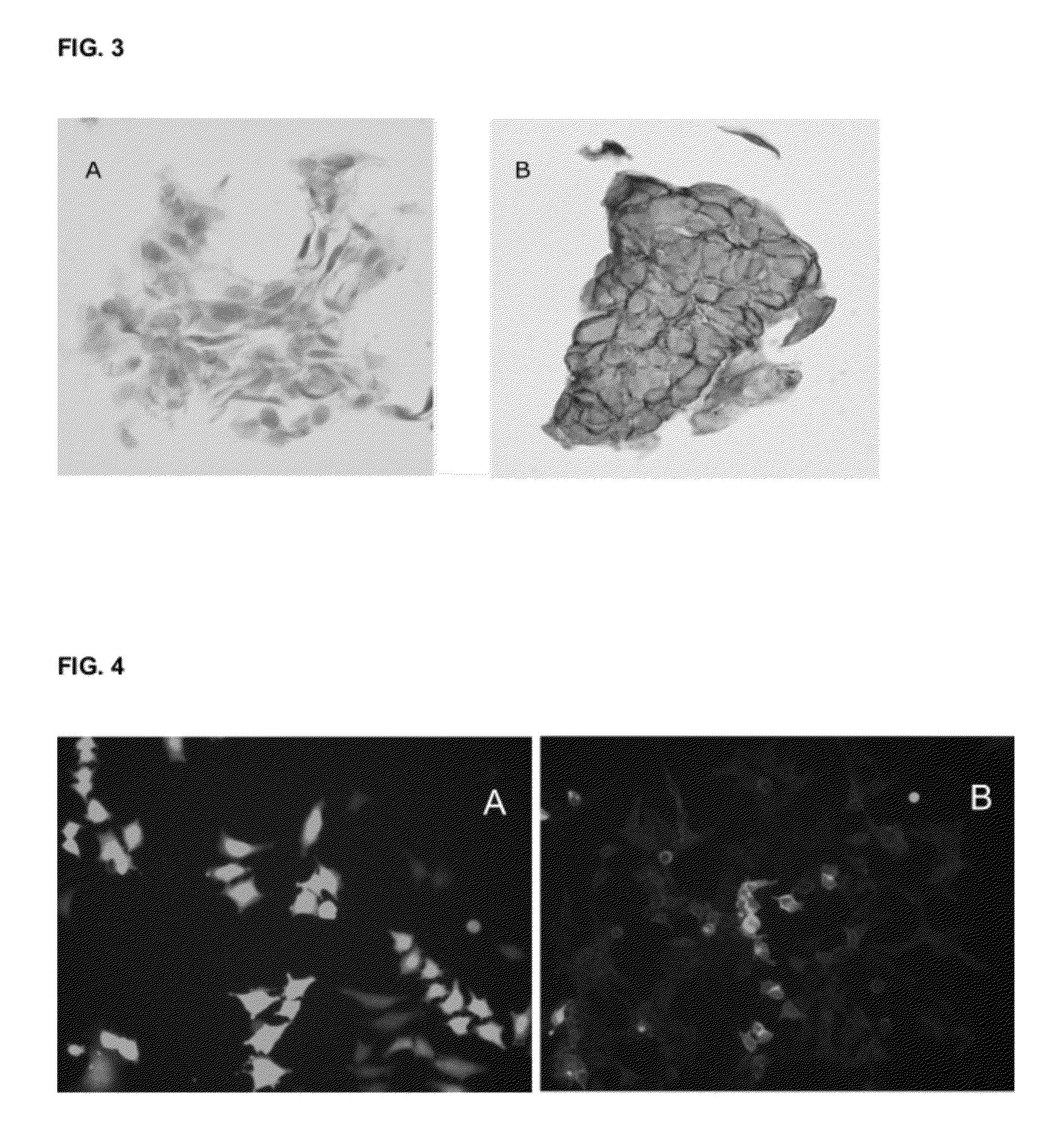Molecules and methods for modulating tmem16a activities
- Summary
- Abstract
- Description
- Claims
- Application Information
AI Technical Summary
Benefits of technology
Problems solved by technology
Method used
Image
Examples
example 1
Antibody Generation
[0224]The peptide sequence KLIRYLKLKQ was used to raise a mouse monoclonal antibody (5E2D1, which is an IgG1 antibody). FIG. 1 highlights where the peptide sequence was directed. SP31 (ab64085) Abcam is a rabbit monoclonal antibody against human TMEM16A. We have mapped SP-31 binding to the 2nd extracellular domain using peptide blocking experiments and western blotting. BV-10 (ab65970) Abcam is also a rabbit monoclonal antibody against human TMEM16A. TMEM16A was detected using a rabbit polyclonal anti-TMEM16A antibody (BV10 ab65970). The immunogen is a synthetic peptide from the C-terminus of human TMEM16A.
[0225]In addition, a second rabbit antibody to human TMEM16A (“SP31 ab64085”) was tested. Three blocking peptides were generated: Peptide #1 has the amino acid sequence of EEAVKDHPRAEYEARVLEKSLK (SEQ ID NO:4), Peptide #2 has the amino acid sequence of DHEECVKRKQRYEVDYNLE (SEQ ID NO:5); and Peptide #3 has the amino acid sequence of KEKVLMVELFMREEQDK (SEQ ID NO:6)...
example 2
Differential Expression in Cancer Versus Normal Tissues
[0226]Two commercial antibodies (SP-31 and BV-10) recognizing TMEM16A were tested against a panel of normal and tumor tissue arrays. Formalin fixed paraffin embedded arrays were obtained from Pantomics. Antibody concentrations were optimized prior to testing the arrays. An array (MN0341) containing 33 types of normal tissue was used to determine expression in patient critical tissues such as liver, kidney, heart. Multiple tumor arrays were tested containing tissue specific normal and cancerous tissue. Tumor arrays tested included GIST481, a gastrointestinal stromal tumor array containing 24 univolved and GIST tissues. Other arrays were tested from esophagus (ESC241), stomach (STC961) and colon (COC481).
[0227]Addition arrays were obtained from Biomax and tested with SP-31, BV-10 and isotype control. Arrays tested included FDA955 normal tissue array, GIST881, gastrointestinal stromal tumor array, and HN802 a head and neck tumor ar...
example 3
TMEM16A is Localized on the Cell Surface
[0229]Cell surface localization of TMEM16A was tested in two different assay systems, formalin fixed paraffin embedded (FFPE) cell line pellets and expression of the TMEM16A-GFP tagged ORF in Hela cells.
[0230]Formalin Fixed Paraffin Embedded Cell Line Pellets:
[0231]Gastrointestinal stromal tumor cell lines GIST882 were cultured, embedded in paraffin and formalin fixed. The resulting pellets were incubated with either SP-31 or IgG isotype control. The detailed method is described herein: cells were grown to 80% confluence in T150 flasks, media was aspirated and cells rinsed twice with 40 ml of sterile PBS. Cells were initially fixed for 10 min using 40 ml of 10% neutral buffered formalin. Cells were then detached using a scraper and collected into a 50 ml conical tube. Fixation was continued for an additional two hours. Post fixation, cells were pelleted by centrifugation for 5 min at 1200 rpm and formalin removed by aspiration. A range of 0.5-...
PUM
| Property | Measurement | Unit |
|---|---|---|
| Cytotoxicity | aaaaa | aaaaa |
Abstract
Description
Claims
Application Information
 Login to View More
Login to View More - R&D
- Intellectual Property
- Life Sciences
- Materials
- Tech Scout
- Unparalleled Data Quality
- Higher Quality Content
- 60% Fewer Hallucinations
Browse by: Latest US Patents, China's latest patents, Technical Efficacy Thesaurus, Application Domain, Technology Topic, Popular Technical Reports.
© 2025 PatSnap. All rights reserved.Legal|Privacy policy|Modern Slavery Act Transparency Statement|Sitemap|About US| Contact US: help@patsnap.com



